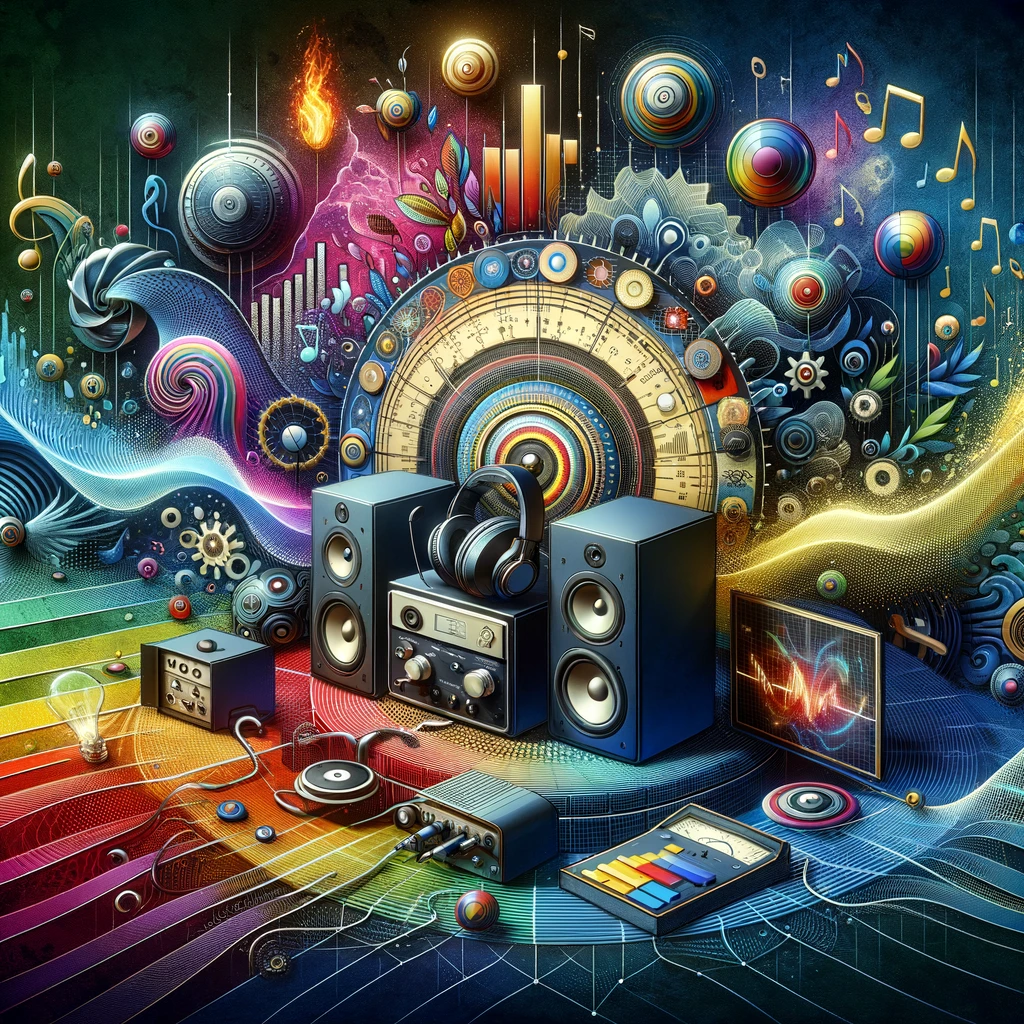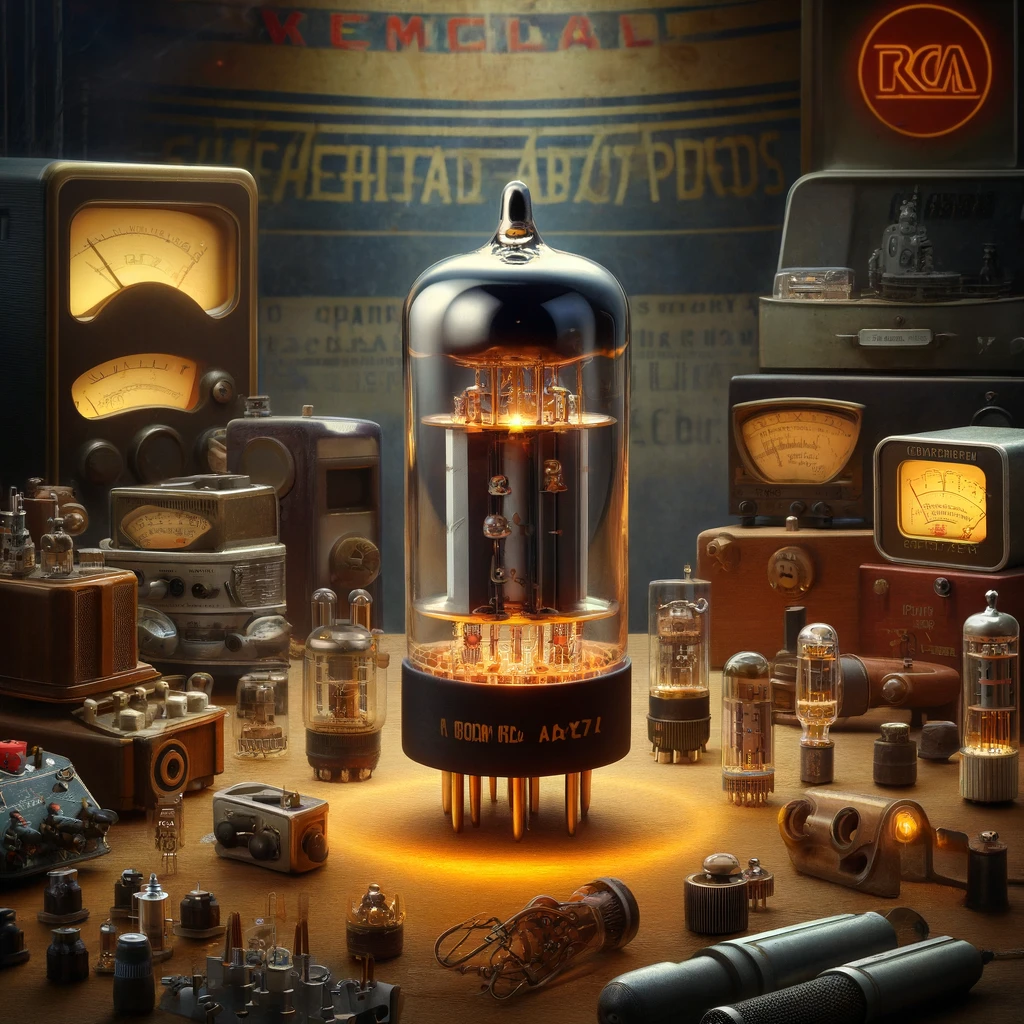Sound Quality in Car Audio – What is “sound quality”?
Measurement Mania
Not long ago, and presently in many circles, sound quality (“SQ”) was said to be best represented by audio systems amplifying with the lowest Total Harmonic Distortion (“THD”) measurement.
Overlapping the THD focus was realization and consideration of Transient Intermodulation Distortion (“TIM”, AKA Slew-Induced Distortion “SID”), also a quantitative measurement said to better describe sound quality.
There are other measurements purporting to describe sound quality and maybe taken altogether the measurements give some ballpark sense of potential sound quality. But, “sound quality” in the human sense — despite some authoritarian claims and challenges — has so far eluded reduction to objective measurements and numbers.

Transistorized “Perfection”
Attainment of evermore absurdly “perfect” THD figures (0.001% THD, etc.) has most often been accomplished by means of solid-state/transistorized amplification for its usual real benefits of size, heat and cost reduction.
But The Emperor Has No Ears
In parallel with the increasingly measurement-oriented obsession (and claimed audible improvements) was growing awareness of decreasing ‘sound quality’ — the better the numbers became, generally and often enough to persist, the worse ‘the sound’ became. Anecdotal evidence of this truth abounds, probably in every family. Look to practically any issue of “The Absolute Sound”, “Stereophile” and similar publications.
Tubes Measure Worse But Sound Better
Meanwhile, tube amplifiers that boost audio power by means of electron valves have notoriously higher THD and TIM/SID measurements yet are often regarded as having better ‘sound quality’ compared to transistorized amplifiers. Debates of ‘which sounds better, transistors or tubes?’ have waged for decades in the popular press and throughout audiophile concerns.

Fundamentally Opposite Means of Amplification
There is enormous difference between transistors and tubes regarding their internal workings. From our Articles section:
Tubes use a charged electron plasma cloud in vacuum (see space charge), while transistors force audio signal current through something not unlike dirty sand –possibly why ‘brittle, hard, sharp, gritty and scratchy’ often describe “transistor sound” [April 2012, years after writing this we discovered Alexander Dumble, creator of what many musicians consider to be among the best-sounding guitar amplifiers ever made, concurs: “The difference comes down to this: The more fragile harmonics can survive in a vacuum tube, [versus how] they seem to be eliminated or squashed in a solid-state crystal lattice…electrons can survive [with greater fidelity] in a free-space vacuum where they have trouble in a crystal lattice.”].
Difference in circuit complexity also bolsters Dumble’s claim. Whereas rather linear tube circuits are usually simple, most transistor circuits require high negative feedback and more complexity. The All American Five was for decades a popular and common radio, requiring only five tubes in surprisingly simple circuitry. “Transistorization” happened for economy, not better sound — in this case, cheaper was just cheaper. In terms of gracefulness, straightforward simplicity and perhaps ultimately sound quality, transistorized amplification seems to often fall short. See also How Does a Transistor Work.
Others have presented more esoteric conjectures: Listen from 3:15 into interview with Preston Nichols (Montauk / Philadelphia Experiment), regarding otherworldliness of electrons in a vacuum tube: ‘In vacuum tubes… an electron is a particle and a wave, just like a photon is… electron in a vacuum becomes and operates as a wave… different set of properties for vacuum-conducted (wave) electron versus metal-conducted (particle) electrons… vacuum tubes hit the spiritual level… electrons are moving into another reality… electrons in a vacuum approach god / godliness.’ — “…Preston Nichols has developed a considerable reputation for his alleged involvement in time travel and secret government projects. However, it is not very well known at all that he was just as deeply involved in the music scene of the 1960’s as rock ‘n roll came to center stage in world pop culture.” — from Peter Moon’s book “Music in Time”.
Research, Understanding, Best of Several Worlds
On the other hand, leaps in design of transistorized amplification have been made by industry icons including Nelson Pass, Bob Pease, Bob Widlar, Walter G. Jung, and others. David Berning, one of the oldest and most respected audio designers, notably often combines tubes and transistors, excellently leveraging the benefits of each technology toward improving overall sound quality.
Digital Signal Processing (“DSP”) introduces into audio equipment design the wonderful but complex mathematical manipulation of digitized signals. Izotope is well-known in pro-audio for its seemingly magical products. In mobile audio, “DSP processors” are used primarily to shape the equalization curve, apply steep crossover functions to split audio signals amongst the speakers best suited to handle the frequency ranges, and to apply various delays which aid psyco-acoustic perceptions of spatiality and enhance impact, coherence, clarity and “sound-stage”. See below, however, for recent example of when digitalia goes too far.
SOURCE https://milbert.com/sq
What is meant by “sound quality” ?
“Sound quality” refers to the perceived characteristics of sound that contribute to its aesthetic appeal, clarity, and fidelity. It encompasses various factors that affect how sound is perceived by listeners, including:
1. Clarity: Clarity refers to the degree to which sound is clear, intelligible, and free from distortion or interference. High-quality sound should have good clarity, allowing listeners to hear individual elements of the sound with precision.
2. Fidelity: Fidelity, also known as accuracy or faithfulness, refers to how accurately the reproduced sound matches the original source. High-fidelity sound reproduction aims to preserve the nuances, dynamics, and timbre of the original sound as faithfully as possible.
3. Balance: Balance refers to the relative levels of different frequencies (bass, midrange, and treble) in the sound. A well-balanced sound should have a smooth frequency response across the audible spectrum, with neither excessively boomy bass nor piercing treble.
4. Dynamic Range: Dynamic range refers to the range between the quietest and loudest sounds in a recording or reproduction. High-quality sound should have a wide dynamic range, allowing for subtle nuances in volume and expression to be heard clearly.
5. Spatial Imaging: Spatial imaging refers to the perception of sound placement and directionality within a stereo or surround sound field. High-quality sound reproduction should provide a sense of depth, width, and localization, creating a realistic and immersive listening experience.
6. Resolution: Resolution refers to the level of detail and definition in the sound, particularly in complex or dense musical passages. High-resolution sound should reveal fine nuances, textures, and subtleties in the music, enhancing the listening experience.
7. Absence of Distortion: Distortion refers to any unwanted alteration or coloration of the original sound, such as clipping, harmonic distortion, or frequency modulation. High-quality sound reproduction should minimize distortion, preserving the integrity of the original sound.
Overall, sound quality is a subjective and multifaceted concept that depends on various factors, including the quality of the recording or reproduction equipment, the acoustics of the listening environment, and individual listener preferences. Achieving optimal sound quality often requires careful selection of audio equipment, proper setup and calibration, and attention to detail in recording, mixing, and mastering processes.